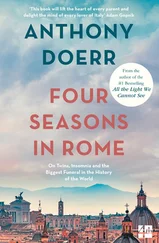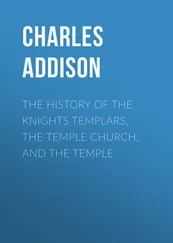Edward Dickinson - Music in the History of the Western Church
Здесь есть возможность читать онлайн «Edward Dickinson - Music in the History of the Western Church» — ознакомительный отрывок электронной книги совершенно бесплатно, а после прочтения отрывка купить полную версию. В некоторых случаях можно слушать аудио, скачать через торрент в формате fb2 и присутствует краткое содержание. Жанр: foreign_antique, foreign_prose, на английском языке. Описание произведения, (предисловие) а так же отзывы посетителей доступны на портале библиотеки ЛибКат.
- Название:Music in the History of the Western Church
- Автор:
- Жанр:
- Год:неизвестен
- ISBN:нет данных
- Рейтинг книги:4 / 5. Голосов: 1
-
Избранное:Добавить в избранное
- Отзывы:
-
Ваша оценка:
- 80
- 1
- 2
- 3
- 4
- 5
Music in the History of the Western Church: краткое содержание, описание и аннотация
Предлагаем к чтению аннотацию, описание, краткое содержание или предисловие (зависит от того, что написал сам автор книги «Music in the History of the Western Church»). Если вы не нашли необходимую информацию о книге — напишите в комментариях, мы постараемся отыскать её.
Music in the History of the Western Church — читать онлайн ознакомительный отрывок
Ниже представлен текст книги, разбитый по страницам. Система сохранения места последней прочитанной страницы, позволяет с удобством читать онлайн бесплатно книгу «Music in the History of the Western Church», без необходимости каждый раз заново искать на чём Вы остановились. Поставьте закладку, и сможете в любой момент перейти на страницу, на которой закончили чтение.
Интервал:
Закладка:
Far more commonly, however, does the sacred dance assume a representative character and become a rudimentary drama, either imitative or emblematic. It depicts the doings of the gods, often under the supposition that the divinities are aided by the sympathetic efforts of their devotees. Certain mysteries, known only to the initiated, are symbolized in bodily movement. The fact that the dance was symbolic and instructive, like the sacrificial rite itself, enables us to understand why dancing should have held such prominence in the worship of nations so grave and intelligent as the Egyptians, Hebrews, and Greeks. Representations of religious processions and dances are found upon the monuments of Egypt and Assyria. The Egyptian peasant, when gathering his harvest, sacrificed the first fruits, and danced to testify his thankfulness to the gods. The priests represented in their dances the course of the stars and scenes from the histories of Osiris and Isis. The dance of the Israelites in the desert around the golden calf was probably a reproduction of features of the Egyptian Apis worship. The myths of many ancient nations represent the gods as dancing, and supposed imitations of such august examples had a place in the ceremonies devoted to their honor. The dance was always an index of the higher or lower nature of the religious conceptions which fostered it. Among the purer and more elevated worships it was full of grace and dignity. In the sensuous cults of Phoenicia and Lydia, and among the later Greek votaries of Cybele and Dionysus, the dance reflected the fears and passions that issued in bloody, obscene, and frenzied rites, and degenerated into almost incredible spectacles of wantonness and riot.
It was among the Greeks, however, that the religious dance developed its highest possibilities of expressiveness and beauty, and became raised to the dignity of a fine art. The admiration of the Greeks for the human form, their unceasing effort to develop its symmetry, strength, and grace, led them early to perceive that it was in itself an efficient means for the expression of the soul, and that its movements and attitudes could work sympathetically upon the fancy. The dance was therefore cultivated as a coequal with music and poetry; educators inculcated it as indispensable to the higher discipline of youth; it was commended by philosophers and celebrated by poets. It held a prominent place in the public games, in processions and celebrations, in the mysteries, and in public religious ceremonies. Every form of worship, from the frantic orgies of the drunken devotees of Dionysus to the pure and tranquil adoration offered to Phoebus Apollo, consisted to a large extent of dancing. Andrew Lang’s remark in regard to the connection between dancing and religious solemnity among savages would apply also to the Hellenic sacred dance, that “to dance this or that means to be acquainted with this or that myth, which is represented in a dance or ballet d’action .” 4 4 Lang, Myth, Ritual, and Religion .
Among the favorite subjects for pantomimic representation, united with choral singing, were the combat between Apollo and the dragon and the sorrows of Dionysus, the commemoration of the latter forming the origin of the splendid Athenian drama. The ancient dance, it must be remembered, had as its motive the expression of a wide range of emotion, and could be employed to symbolize sentiments of wonder, love, and gratitude. Regularly ordered movements, often accompanied by gesture, could well have a place in religious ceremony, as the gods and their relations to mankind were then conceived; and moreover, at a time when music was in a crude state, rhythmic evolutions and expressive gestures, refined and moderated by the exquisite sense of proportion native to the Greek mind, undoubtedly had a solemnizing effect upon the participants and beholders not unlike that of music in modern Christian worship. Cultivated as an art under the name of orchestik , the mimic dance reached a degree of elegance and emotional significance to which modern times afford no proper parallel. It was not unworthy of the place it held in the society of poetry and music, with which it combined to form that composite art which filled so high a station in Greek culture in the golden age.
The Hellenic dance, both religious and theatric, was adopted by the Romans, but, like so much that was noble in Greek art, only to be degraded in the transfer. It passed over into the Christian Church, like many other ceremonial practices of heathenism, but modified and by no means of general observance. It appeared on occasions of thanksgiving and celebrations of important events in the Church’s history. The priest would often lead the dance around the altar on Sundays and festal days. The Christians sometimes gathered about the church doors at night and danced and sang songs. There is nothing in these facts derogatory to the piety of the early Christians. They simply expressed their joy according to the universal fashion of the age; and especially on those occasions which, as for instance Christmas, were adaptations of old pagan festivals, they naturally imitated many of the time-honored observances. The Christian dance, however, finally degenerated; certain features, such as the nocturnal festivities, gave rise to scandal; the church authorities began to condemn them, and the rising spirit of asceticism drove them into disfavor. The dance was a dangerous reminder of the heathen worship with all its abominations; and since many pagan beliefs and customs, with attendant immoralities, lingered for centuries as a seductive snare to the weaker brethren, the Church bestirred itself to eliminate all perilous associations from religious ceremony and to arouse a love for an absorbed and spiritual worship. During the Middle Age, and even in comparatively recent times in Spain and Spanish America, we find survivals of the ancient religious dance in the Christian Church, but in the more enlightened countries it has practically ceased to exist. The Christian religion is more truly joyful than the Greek; yet the Christian devotee, even in his most confident moments, no longer feels inclined to give vent to his happiness in physical movements, for there is mingled with his rapture a sentiment of awe and submission which bids him adore but be still. Religious processions are frequent in Christian countries, but the participants do not, like the Egyptians and Greeks, dance as they go. We find even in ancient times isolated opinions that public dancing is indecorous. Only in a naive and childlike stage of society will dancing as a feature of worship seem appropriate and innocent. As reflection increases, the unrestrained and conspicuous manifestation of feeling in shouts and violent bodily movements is deemed unworthy; a more spiritual conception of the nature of the heavenly power and man’s relation to it requires that forms of worship should become more refined and moderate. Even the secular dance has lost much of its ancient dignity from somewhat similar reasons, partly also because the differentiation and high development of music, taking the place of dancing as a social art, has relegated the latter to the realm of things outgrown, which no longer minister to man’s intellectual necessities.
Читать дальшеИнтервал:
Закладка:
Похожие книги на «Music in the History of the Western Church»
Представляем Вашему вниманию похожие книги на «Music in the History of the Western Church» списком для выбора. Мы отобрали схожую по названию и смыслу литературу в надежде предоставить читателям больше вариантов отыскать новые, интересные, ещё непрочитанные произведения.
Обсуждение, отзывы о книге «Music in the History of the Western Church» и просто собственные мнения читателей. Оставьте ваши комментарии, напишите, что Вы думаете о произведении, его смысле или главных героях. Укажите что конкретно понравилось, а что нет, и почему Вы так считаете.












